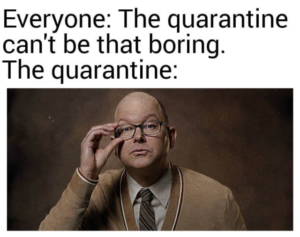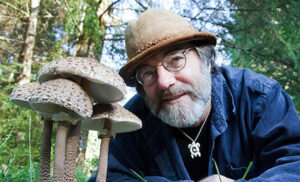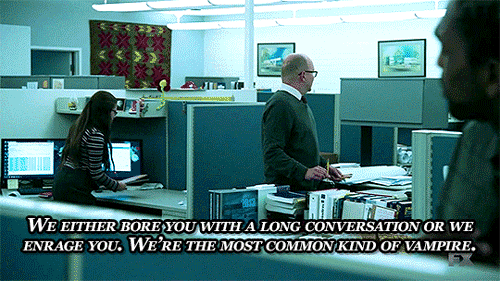On the FX television show “What We Do In The Shadows,” the audience meets a familiar character: the energy vampire. His name is Colin Robinson, an unassuming, spectacled man whose incessant droning small talk slowly sap those around him of their life force. Colin is a vampire who doesn’t have to bite anyone; he just has to explain mundane details of existence in a stifling monotone until his victims drop.
The subject doesn’t matter. Whether it’s discussions of nuclear fission or a hand-to-hand fight with a bear, Colin Robinson wants to explain the minutiae in the most boring possible way. How the unique design in his boot’s tread allowed him to escape the bear, and how he concluded to buy it. The bolts’ size that’s holding the Hadron collider together, not the application of the engineering miracle.
So ask yourself: are you being your own personal Colin Robinson?

You’re sitting on a ground-breaking piece of technology to solve a huge problem. Maybe it’s a non-toxic version of a widely used industrial chemical or a doubly efficient solar cell. You’ve been bent over a bench in your garage, occasionally shoving a sandwich into your body, and created something truly remarkable.
Like all big problems, you’ve untangled some of the granular issues that snarl-up in a rat king of static progress. People working on similar problems will be impressed, but those usually aren’t the people buying, investing, or using your end product.
Because like tends to congregate with like, there’s a strong temptation to load up your pitch with industry jargon because, well, we all like to impress our friends and colleagues, and we all want to feel smart.
Your idea is probably as excellent as you think it is — after all, it’s a product of tireless hours of work from a person in the know. But if you Robinson it all up, bogging down your audience in technical language, it’s destined to become the Betamax of green tech.
A Mushrooming Case Study
Paul Stamets is a mycologist who works with different strains of mushrooms to do everything from bioremediation of oil-contaminated soil to substitute for leather in clothing and many other industrious jobs suited to mycelia. And while you can find plenty of Stamets’ writing and research in industry journals, you can also find Stamets himself in media vehicles like Joe Rogan’s podcast or commenting on documentaries about mushrooms.

Paul Stamets
The point isn’t for Stamets to ramble on ad nauseum about one mushroom’s particular genome but to talk to the broadest possible audience about the most general possibilities of the mycology revolution of his dreams. He wears a hat made of mushroom leather. He tells Rogan about cleaning up oil spills with mushrooms until he gets Rogan’s signature varsity jock “Whoa” out of him.
In a never-ending media deluge, the venture capital guy you’re trying to reach has probably heard broadly about the problem you’re trying to solve.
Your Audience Aren’t Your Peers. Deal With It.
Everyone knows, broadly, that industrial-scale farm pesticides are harmful to the soil. Everyone is also broadly aware that we are in a time crunch to reduce carbon emissions. Even CNBC viewers whose gifts are writing checks and stepping on necks know that climate change will cause considerable disruptions in the supply chain.
Understand that while you explain the scientific principles and engineering beauty that went into your cleantech solution, your audience is going to be more focused on crass questions like, “How much will it cost to manufacture?” and “Who’s going to buy it?”
While these people might not be part of your peer group, they are (for better or for worse) your audience. Are you going to use your allotted ten minutes to suck the life out of them, or are you going to do whatever is necessary to connect with them and bring your creation to market?
The Zero Jargon Test
Your goal is to explain your project in a way a five-year-old can understand. See how fast you can convey the broad outline of what problem your invention solves and why it matters to them. On your second attempt, cut 10 seconds off that explanation. On your third pass, slice off ten more. Even better, try to draw a stick figure diagram and have a friend guess.
Did you use any jargon? Probably not. Why? Because by the time you cut your pitch down to elevator size, you’ll realize there’s no room for it in a small, moving compartment packed with the essentials you intuitively know your audience must understand to care.
The truth is ‘jargon’ is a derivative of the French word ‘ego,’ and your attempt to make yourself seem like a more qualified expert by using it will only drown out the value of what you’ve created.
Don’t dare your audience to tune out.
Cleantech Is The Triumph Of Altruism Over Ego
If you’re in cleantech, you’re an altruist at heart. That means you care about other people. So if you want to change their lives for the better, make your pitch more accessible so more people can see themselves in the new world you’re creating.

